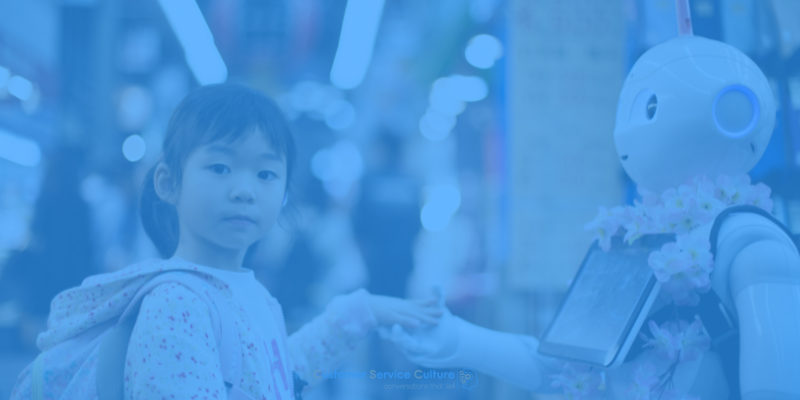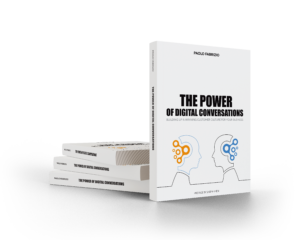We’re in the midst of a revolution but most people still don’t know what direction to take. That’s my answer whenever I got asked about the spread of artificial intelligence in customer service. Briefly speaking, my take is the result of many conversations that I’ve had these past few months with customer service directors and managers. What’s already evident though, is that organizations urgently need to strike a balance between AI and human interactions.
“Land of confusion”
That’s the title of an old Genesis song, but it also represents pretty well the current situation in many organizations being under pressure. And I do empathize with them because vendors are pushing to sell them their Artificial Intelligence solutions, especially for their customer service operations. As a Digital Customer Service consultant, I’m observing in particular:
- New generative artificial intelligence (Gen AI) powered chatbots embedded into omni-channels platforms to provide faster solutions or to re-route the conversation with the customer onto human agents, when necessary.
- Artificial solutions integrated into self-service options (e.g. Help Pages within corporate websites) to assist the end customer when using them to make their lives easier.
- New AI solutions for speech analytics to enhance the ability to detect both customer’s sentiment and intent during the conversation.
Why striking a balance is priority #1
With so many inputs and commercial pressure on AI solutions, Customer Service, IT and HR managers are trying to join the dots. Because on one side they want to take full advantage of Gen AI, yet on the other they are worried about making bad decisions that might negatively affect their organizational structure. Therefore they are turning this tightrope into these crucial questions: what current tasks should Gen AI carry out? What others instead should be allocated to humans? What new skills do humans need to get equipped with? That’s why they realize that they urgently need to strike a balance between the adoption of Gen AI into their Digital Customer Service operations and all staff (managers included)!
💡If you want to delve more into this topic I suggest you reading chapters 4.2 and 4.3 of my book ‘The Power of Digital Conversations‘.
Helping organizations out
 Image credit: Pexy.com
Image credit: Pexy.com
As a result of this situation, in recent months I have been helping some client companies to review and update their processes, metrics and skills for Digital Customer Service channels (i.e. Whatsapp, FB Messenger, Live Chat, Video Chat). More specifically, by re-designing their digital conversational flows with the end customer based on possible scenarios as for specific contact reasons:
- Full-chatbot/AI conversation (the only human involved is the end customer)
- Hybrid conversation (starts with AI, then handovers to a human operator where necessary)
- 100% human-to-human conversation (agent and customer involved).
Consequently, designing and delivering ad hoc up-skilling training paths for both supervisors and front line staff (customer service team).
Ride today or suffer tomorrow
In just a few months, balancing Gen AI and human interactions has become a key priority around the globe, regardless of industry or market you belong to. And since Artificial Intelligence is bound to pervade quickly every single department, you’d better take action if you want to ride the wave.
👉 Check out my customized consulting and training itineraries.
Have great conversations.
P.S. To enjoy more stay in the loop.
Credit image: Unsplash.com.







